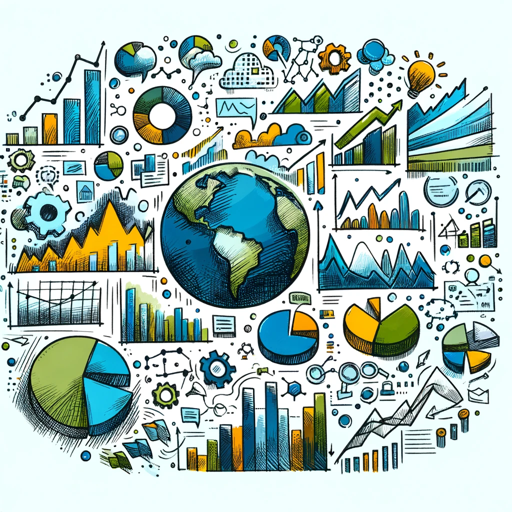Análise de dados-data analysis and insights.
AI-powered data insights made simple.
Analise de dados.
Related Tools
Load More
Data Analyst
Master Data Analyst GPT: Excel in SQL, Python, R, data visualization (Tableau, Power BI), and data management. Proficient in statistics, ML, AI. Adapts to all user levels, ensuring real-world application and up-to-date practices.

Data analist: Excel en CSV analyse 🤖🕵️
Upload uw Excel- of CSV-bestand en vertrouw op mijn expertise voor geavanceerde data-analyse en -visualisatie. Met deze GPT-technologie is het mogelijk om zonder ingewikkelde instructies direct inzicht te krijgen in uw data.

Data Analyse
Data Science Expert analyzing user-uploaded data to provide accurate insights.

Data Analysis GPT
Your concise, friendly guide in data analysis.

▶️🏛️RELATÓRIO⚖️🔍
Um GPT com o único propósito de produzir um relatório detalhado e completo da petição inicial, contestação e réplica em casos complexos

Statistical Analysis
Analyze, interpret, and present quantitative data.
20.0 / 5 (200 votes)
Introduction to Data Analysis
Análise de dados, or data analysis, is the process of examining, cleaning, transforming, and modeling data with the goal of discovering useful information, informing conclusions, and supporting decision-making. It involves various techniques and methodologies that help identify patterns, relationships, and trends within data sets. For instance, in a business scenario, data analysis can be used to evaluate customer behavior and improve marketing strategies. In healthcare, it can help in predicting disease outbreaks and improving patient care. The core objective is to make data-driven decisions that enhance outcomes in various domains.

Main Functions of Data Analysis
Descriptive Analysis
Example
Summarizing the average income, median age, and population distribution in different states of Brazil.
Scenario
A government agency wants to understand the demographic and economic profile of each state to allocate resources efficiently.
Predictive Analysis
Example
Forecasting future unemployment rates based on historical data and economic indicators.
Scenario
An economic think tank aims to predict the impact of policy changes on employment rates over the next decade.
Prescriptive Analysis
Example
Providing recommendations on where to invest in infrastructure to maximize economic growth and reduce inequalities.
Scenario
A state government seeks guidance on how to prioritize infrastructure projects to boost economic development and address regional disparities.
Ideal Users of Data Analysis Services
Government Agencies
These users benefit from data analysis by gaining insights into population demographics, economic conditions, and social issues, enabling them to design effective policies and allocate resources efficiently. For example, analyzing healthcare data can help in optimizing the distribution of medical resources and planning public health interventions.
Businesses and Corporations
Businesses utilize data analysis to understand market trends, consumer behavior, and operational efficiency. This helps in making informed decisions, enhancing customer satisfaction, and improving overall profitability. For instance, a retail company might analyze sales data to optimize inventory management and improve product recommendations.

Guidelines for Using Análise de Dados
1
Visit aichatonline.org for a free trial without login, also no need for ChatGPT Plus.
2
Prepare your data. Ensure your datasets are clean and properly formatted for analysis. Common formats include CSV, Excel, and JSON.
3
Upload your data. Use the upload functionality to import your datasets into the platform for analysis.
4
Select analysis methods: Choose from various multivariate analysis techniques such as PCA, correlation analysis, or regression analysis based on your data and objectives.
5
Interpret results: Utilize the generated reports and visualizations to understand relationships between variables and make data-driven decisions or recommendations.
Try other advanced and practical GPTs
Skypoint AI GPT
AI-Powered Data Interaction for Businesses

matrix
AI-Powered Matrix Solutions

GPT de Imagem
AI-powered digital art creation

WordPress Optimizer
AI-Powered Speed and Performance for WordPress

Fanfic Creator
Craft your perfect fanfiction with AI.

Flutter Code Expert
AI-Powered Flutter Coding Help

Website Mock-up Designer
AI-powered custom website designs

Academic Rephraser
AI-Powered Academic Rephrasing Tool

Concept Map Creator
AI-driven tool for structured concept mapping

Academic article Summery
AI-Powered Academic Summaries Made Simple

ConciseGPT
AI-powered tool for precise responses
Betty Boop | Print On Demand Merch | YAYAI
AI-powered creativity for custom merchandise.

- Data Analysis
- Economic Indicators
- Environmental Research
- Social Studies
- Policy Recommendations
Common Questions About Análise de Dados
What types of data can I analyze with Análise de Dados?
You can analyze various types of data including environmental, social, and economic indicators from different regions. The platform supports common data formats like CSV, Excel, and JSON.
How does Análise de Dados help in identifying relationships between variables?
The platform offers multivariate analysis tools such as PCA, correlation analysis, and regression analysis to help you identify and understand relationships between different variables in your dataset.
Can I use Análise de Dados for making investment recommendations?
Yes, by analyzing the relationships between variables, you can identify key areas for investment that may reduce social inequality or environmental impacts. The insights gained can inform strategic decisions and policy recommendations.
Is it necessary to have a background in statistics to use Análise de Dados?
While a background in statistics is helpful, the platform is designed to be user-friendly and provides guidance throughout the analysis process. Detailed reports and visualizations make it accessible to users with varying levels of expertise.
How can Análise de Dados benefit academic research?
Análise de Dados provides robust analytical tools for academic research, allowing researchers to uncover complex relationships within their data, support hypotheses with empirical evidence, and publish findings with confidence.